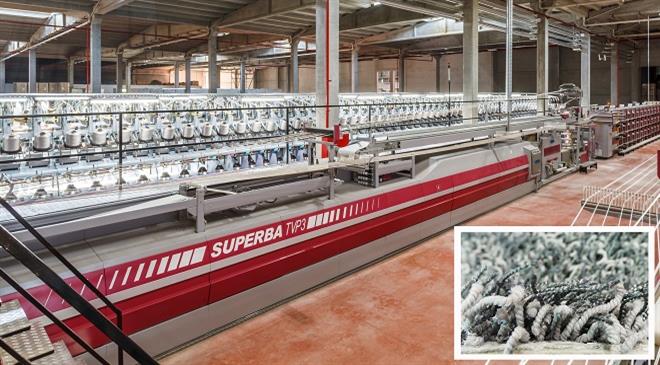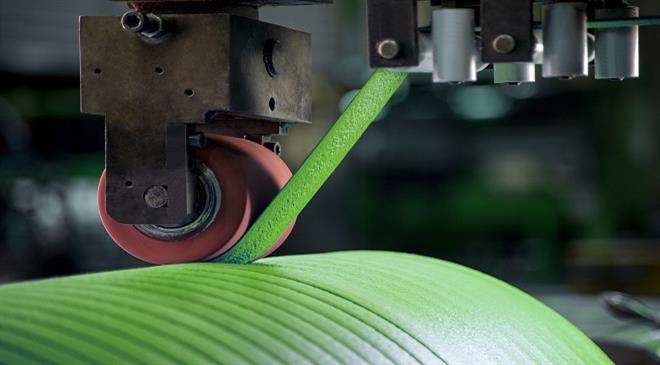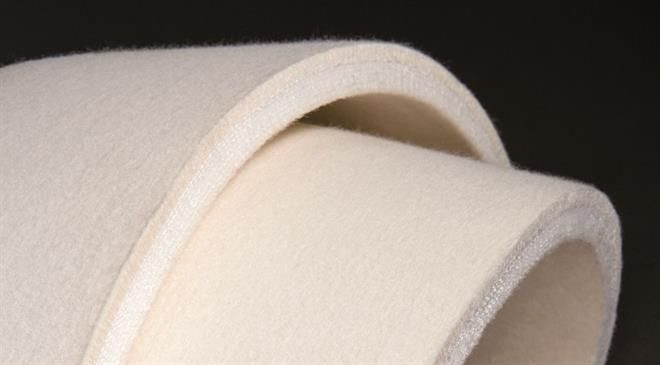Investments in equipment will be more necessary than ever
UCMTF is the trade association of French textile machinery manufacturers and a member of Cematex which owns the major international exhibitions ITMA and ITMA Asia. UCMTF regroups 30 members companies which develop, sell, and service specialised machines. In a chat with Paulami Chatterjee, UCMTF secretary general Christian Guinet, speaks about the effects of the pandemic on the French textile industry and the way forward, the steps the industry is taking to drive circularity and technological advancements.
How has the pandemic affected the French textile machinery sector?
Our companies started 2020 with very good, often record, order backlogs and many new projects which were being studied with our customers. Then came the pandemic. In many countries, our customers' factories have been closed or partially closed for around two months. That's the case with us too. During this global turmoil, demand for services and sales of spare parts nearly came to a halt and many projects were postponed. Our priorities were of course to protect our own employees and to give our customers few but urgent services they needed.
Let me give you the example of Spoolex Group. During the critical period, Roll Concept continued to manufacture and to deliver its technical, low inertia rollers to major face mask machine manufacturers. Decoup+ successfully adapted a manual sealing machine to produce face masks and Calemard provided to specific requests to cover urgent need for slitting the much needed meltblown products.
Fortunately, as our industry had very good years before the pandemic, they were in good financial shape when the pandemic disrupted our business. In France, the government also helped the industrialists navigate the storm. I believe that in some ways the pandemic has accelerated the virtualization process and Industry 4.0. We will certainly talk about that. Generally we are changing our behaviour in ways that might stick but we will do it in the same spirit of optimism and innovation. On the long run, change in market dynamics is what our industry is all about; it is becoming quicker and quicker whatever the day-to-day issues. Our customers' needs keep on growing to introduce new products, to modernise their production processes, to be more flexible and offer high quality products with zero defects and less environmental footprints. Then, I think that after the turmoil, investments in equipment will be more necessary than ever.
What are some of the revelations with respect to the textile and apparel industry for 2020? What measures should the industry take to sustain its trade going forward?
To promote our members' R & D breakthroughs, we have to help them meet their customers as often as possible. Most expos, symposium, road shows etc have been postponed in 2020. Fortunately visio conferences partially made up but we have to find how we will manage this need in the future.
As Europe is a major textile equipment innovative centre in the world, the European national associations like UCMTF have joined together to own and manage, through the Cematex (European Committee of Textile Machinery Manufacturers), the ITMAs. As a member of the Cematex' board, UCMTF takes part in the decisions made by the Cematex for the organisation of our industry and of its exhibitions.
We also support our members' promotional efforts. We are developing a new website and digital tools to help our members participate in the new virtual expos. The seminars and road shows we used to organise may become virtual (even though direct personal contacts are still so important). We are also working on a French Textile Equipment Virtual Show which can be opened on a case to case basis to other European equipment manufacturers.
India is at the forefront of new technologies. The next ITME in December 2021 in Noida (Delhi area) will certainly be a major event and an opportunity to focus on the future.

The economy is in recession the world over and the worst hit are SMEs. Any thoughts on how to help these small yet critical players to tide over the tough times?
Most of our members are small or medium size companies but they are global players. They export most of their equipment and services. They are agile companies run by entrepreneurs working with long term objectives. I do not think they were the worst hit. Some industries are really hit like the airlines, the hotels, the restaurants etc. Even if these businesses will start again, it will probably be at a slow pace. Our customers will recover much quicker, in some sectors they have already recovered. Then they need to invest. In fact, the future of our industry looks bright to me.
In a world rapidly moving towards circularity, what steps is UCMTF taking to create that umbrella wherein machinery players for the textile industry from around the globe can work towards bringing in steps to reduce wastage and pollution?
For many years, UCMTF has been organising internal meetings to help its members exchange ideas about eco-responsibility and recycling.
Eco-responsibility
The demand for eco-responsibility comes from the final consumer. A study by the French Fashion Institute, including a survey of 5000 European and American consumers, has shown high demand and expectation for eco-responsible fashion. Raw materials have to be natural or eco friendly, recycled products are welcome, the production process at least partly local. What is really missing, the study shows, is enough supply of these products. The understanding of their responsibilities and the pressure from customers, have led many producers and retailers make a point by doing more than is required by law, and acknowledge commitment to all stakeholders and to the future of our planet.
One of the most efficient ways to save energy is adapting to servomotors which can be used in a close-loop control system to correct any speed deficiency and save energy and at the same time enhance the quality of the production process. Nsc Schlumberger, the global specialists in textile machines for processing long staple fibres such as wool and wool-like fibres, has introduced the ERA combing machine in a multi-servomotor drive design. With this new drive, most of the settings will be possible via the main control screen. These new servomotor drives will allow more precise settings than using standard gearboxes which will enhance textile quality and save energy.
Recycling
Recycling of textile wastes and post consumer goods is also expected from the consumers. It is a major trend. Laroche offers an Airlay type "Flexiloft 2600" with improved web uniformity and weight range which can run all types of fibres (synthetics, natural, recycled…), blends of fibres and solid particles (foam chips, plastics, wood chips). This allows making smart products from renewable resources and from wastes that are otherwise discarded. A tearing machine type "Jumbo 2000" for high capacity recycling of all types of textile wastes including post-consumer clothing and carpet wastes is also available. As a major player in textile wastes recycling technologies, Laroche sees a strong trend to recycle more and more post-consumer wastes (from clothing, mattresses, carpets…) whilst industrial waste recycling remains a hot topic.
Can you give us an overview of UCMTF's members?
UCMTF's members are particularly strong in long fibre spinning (wool, acrylic and the like), yarn twisting and control (including technical yarns), space-dyeing, heat setting for carpet yarns, carpet systems, dyeing and finishing, felts and belts for finishing processes, nonwovens, air conditioning of textile plants, and recycling processes of textile materials. Their total annual consolidated turnover is close to €1 billion.
How many textile industry members are currently enrolled with you?
About 30. Just a few examples:
- Callebaut de Blicquy together with Rousselet Robatel is offering a complete solution to dye and centrifuge loose stock fibre cakes.
- Beca provides customised automatic equipment for preparation, finishing, quality control and conditioning.
- For the dyeing and finishing industrialists - Dollfus & Muller supplies textile dryer belts and endless special felts and sanforising palmer felts for denim producers.
- Hannecard under the Rollin brand, provides roller coverings in rubber, polyurethane composite and carbide.
- Barbier-Ebelmann offers special cutting devices made of tungsten, high speed steel, ceramics and artificial diamonds.
- Mallein offers beams for warping and weaving in special aluminium alloys.
- Dewilde offers combs, cylinders, shafts and bearings.
- In air conditioning, Aesa Air Engineering supplies complete textile air engineering systems in order to maintain the required temperature and humidity.
- Petit offers a unique permanent storage of original spare parts for many types of equipment.
- Schaeffer is dedicated to the textile industry's digital managing solutions.

What are the strengths of the French machinery industry? What new technologies are manufacturers investing in?
Our members are investing in R&D and organising services around the globe. They are not working from ivory towers but in close partnerships with their customers who are long term partners. Of course there are trends like energy, water and raw materials savings. But as we want to answer the specific needs of each customer, we have to attract textile and mechanical engineers, chemists and business oriented young talents.
To convince our customers, we have to offer them precise ways to estimate their return on investments. For example, a software to estimate very precisely their own annual savings (water, energy, chemicals) is offered by Alliance Machines, the dyeing and finishing machinery manufacturer which has also invested in virtual reality system to offer the customers the possibility to explore deeply inside its range of machines.
What incentives and initiatives by the government are driving domestic and international investment in this sector?
The French government understands the needs of the industry. Amidst the pandemic and the shutdowns, it has taken the necessary steps to help go through the thunderstorms. I think such measures have been taken in most countries.
In some countries with a very important textile industry and many related jobs, the equipment is outdated and the local industry has more and more difficulties to meet the global competition. This is why some governments are helping their local textile industry modernise its production processes. It is necessary because the gap is getting bigger and bigger between the top of the class and the followers. Your own country, India, has a very creative traditional textile industry which needs huge investments. Your government has recognised this need and is active to achieve this goal but, up to now, we have been a bit disappointed with the orders from your country.
Which segment in the textile industry is growing rapidly - spinning, weaving, processing, cutting &stitching, nonwovens? Which are the major constraints for your industry?
Nonwovens are growing at a very rapid speed since the last few years thanks to technical textile products. This sector has accelerated due the incredible worldwide demand for PPE's including protective masks. The demand will probably stabilise for a while but it may decrease thereafter. Then I am afraid that overproduction of some products may appear.
In other sectors the demands are linked- if you spin, you have to weave or knit and then dye and finish the products.
The constraint of our equipment industry is mostly due to the increasing productivity of our equipments. Each equipment is producing more every year, and so less equipment will be needed to produce more products. This is the main constraint of our industry.

Which textile segment remains the largest in terms of imports from France?
France is well known for its creativity in apparel. Many French brands are mythical and attract buyers from all over the world but apparel production has shifted to Maghreb and Asia. Being capital intensive, the textile production has also moved closer to the apparel industry.
Technical textiles on the other hand are still produced in Europe and particularly in France where we have very creative companies in such sectors such as glass or carbon fabrics being used in composites for many applications in aeronautics or the automotive industry.
Which countries are the biggest importers of French textiles machineries?
Most of the turnover is exported to China, India, USA, Europe, Turkey, the Middle East and Africa. We offer hardware, software and services and work in close partnership with our customers. We offer them our state of the art technologies and not off the shelves equipments only. We often design the special equipment that our customers need to introduce new products to their markets or improve their production processes. Our objective is to let the customers get the best returns from their investments. R&D and service are embedded in the French Textile Equipment Manufacturers' DNA. It has always been. Remember that Jacquard, the star of the textile machinery invention was French! We are SME's in which the information flows very rapidly between the commercial, technical and research departments. This is how it should work and it does. It allows us to go much further than purely involved in commercial relationships with our customers.
The Internet of Things, Industry 4.0 - all machinery is being increasingly geared towards that. How is the French machinery industry keeping pace with this?
Industry 4.0 is becoming a reality in the textile industry. In fact, it is already a reality in some factories and it will expand much quicker than most people envision.
Let's try to propose a definition of the factory 4.0. It is a factory in which data are collected through sensors or radio frequency identification tags ( RFID) at each step of the production process, analysed online and automated decisions are made instantly to improve the process inside a factory or between two factories whether inside the same company or with clients or suppliers' factories.
We, as technology partners, have to offer not only innovative (each year we introduce some improvements in our machines) but disruptive solutions. The internet of things is certainly the main way not only to improve the process of each machine but the whole line of production process.
Industry 4.0 requires more and more sensors. Let's give two examples: Fil Control provides such sensors thanks to their 30 years of experience in the yarn sensors and yarn cutter industry. After 5 years of development from Fil Control R&D team, the ring spinning market is now ready to welcome the Motion Reflective Sensor. The company has high demand for their MRS-P speed sensors for ring spinning machinery that allows monitoring, controlling and optimising the yarn manufacturer productivity for better quality at lower cost. The new Motion Yarn Tension sensor developed for tyre and carpet yarn twisting attracts many yarn manufacturers that were looking for many years for a reliable product with homogenous output signal sensors.
Superba with its new Superba B403 automatic winder marked a real technological breakthrough. Its individual spindle motorisation drive, combined with a single tension sensor per position, enables a constant tension winding process, a very accurate bobbin length measuring as well as a unique quality control for each yarn position. It opens up new opportunities in terms of winding quality. Connected through cloud computing to the new Vandewiele Texconnect supervision system, the B403 is part of the Factory 4.0 concept. It provides ready data on yarn tension to supply the predictive maintenance and reduce yarn waste, allowing manufacturers to make the highest quality carpets at the most economic prices. (PC)








